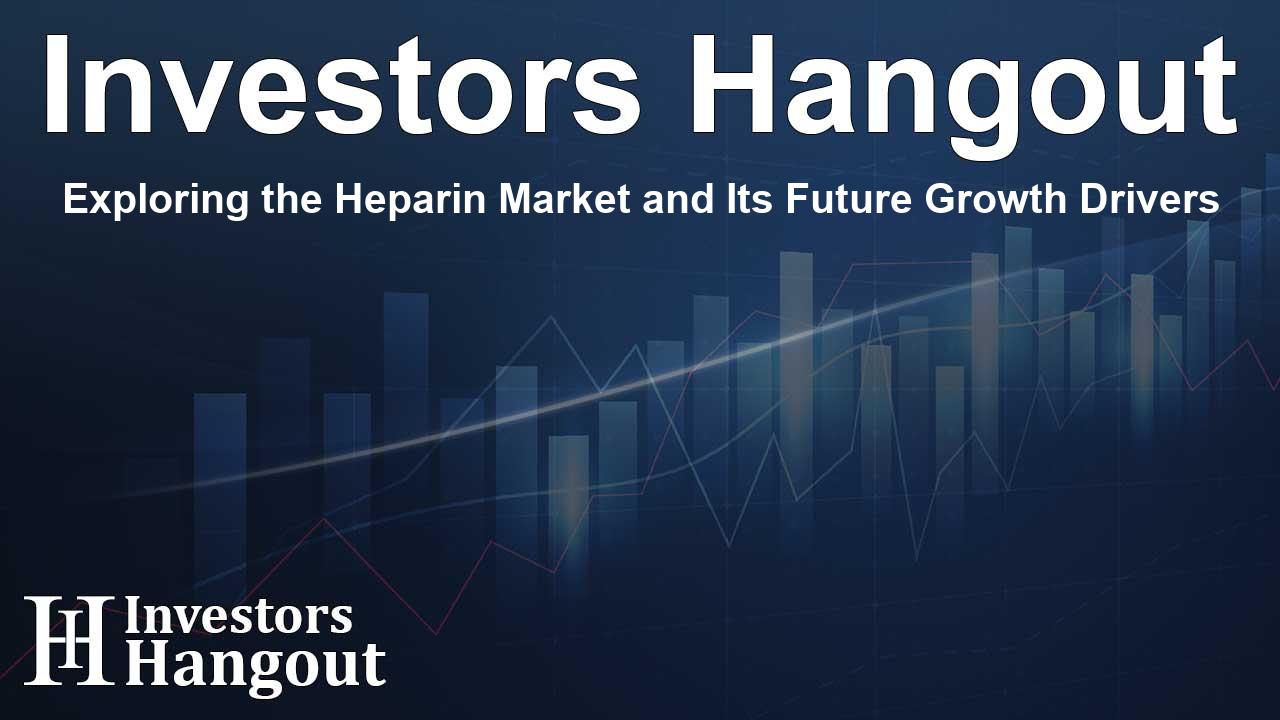Exploring the Heparin Market and Its Future Growth Drivers

Heparin Market Growth Insights
The heparin market is set to witness substantial growth, with projections indicating an increase of USD 3.34 billion from 2024 to 2028. This growth can be attributed to the rising prevalence of coagulation disorders, particularly venous thromboembolism (VTE), and the expanding therapeutic applications of heparin. The annual growth rate is expected to reach a compound annual growth rate (CAGR) of approximately 7.22% during this period. Industry leaders are ramping up research and development initiatives to enhance heparin formulations and address specific patient needs.
The Role of AI in Market Transformation
Recent advancements in artificial intelligence (AI) play a critical role in shaping the heparin market. AI technologies are enabling pharmaceutical companies to streamline processes, optimize drug formulations, and improve patient outcomes. Additionally, AI-driven analytics provide insights into patient demographics and medication efficacy, fostering innovation in heparin products. Companies are increasingly leveraging these technologies to enhance predictive modeling and clinical trials, assisting in faster product development and regulatory approval.
Market Drivers and Trends
The rising incidence of blood clot-related health issues is a primary driver for the heparin market. Conditions such as pulmonary embolism, deep vein thrombosis, and blood clots associated with cancer treatments necessitate effective anticoagulant therapies. Heparin remains a preferred choice due to its well-established efficacy and safety profile. Furthermore, the increase in chronic diseases, such as cardiovascular diseases and diabetes, significantly contributes to the market's expansion. A growing geriatric population that is at higher risk for coagulation disorders further emphasizes the demand for heparin treatments.
Market Challenges
While market growth appears promising, several challenges hinder progress. Concerns about product contamination, counterfeit medications, and the availability of raw materials pose risks to the industry. The impact of African Swine Fever has created supply chain issues, particularly affecting heparin derived from porcine sources. Additionally, the emergence of newer anticoagulants creates competitive pressure, compelling heparin manufacturers to innovate continually to maintain market share.
Market Segmentation Overview
The heparin market is segmented by product type, route of administration, geographical distribution, and application areas. Key product types include low-molecular-weight heparin (LMWH) and unfractionated heparin, which cater to different patient needs and treatment protocols. Administration can occur via subcutaneous injection or intravenous infusion, allowing for flexibility based on clinical scenarios.
Regional Insights
The heparin market exhibits a fragmented structure, with significant contributions from regions such as Europe, North America, and Asia. Europe holds a substantial market share, accounting for approximately 34% of the global demand for heparin. The competitive landscape showcases several key players, including major pharmaceutical companies that are actively involved in the production and distribution of heparin products.
Future Perspectives
Looking ahead, the heparin market is poised for substantial advancements driven by technology and innovative research initiatives. Continuous developments in formulation processes and AI applications are expected to enhance the safety and efficacy of heparin products. The growing awareness of the risks associated with blood clots, coupled with an aging population, ensures that market demand remains strong.
Technavio's Market Research and Insights
Technavio, a leading global technology research and advisory company, offers comprehensive analysis of emerging market trends. With a focus on helping businesses capitalize on market opportunities, their extensive reports provide actionable insights into the evolving landscape of the heparin market. With over 500 specialized analysts, Technavio covers a wide range of sectors, which benefits clients seeking to optimize their market positions.
Frequently Asked Questions
What factors are driving the heparin market's growth?
The primary drivers include the increasing prevalence of coagulation disorders, advancements in AI technologies, and a growing geriatric population at risk for blood clot-related issues.
What are the main challenges faced by the heparin market?
Challenges include product contamination, counterfeit medications, raw material availability issues, and competition from newer anticoagulant drugs.
Which regions contribute most significantly to the heparin market?
Europe, North America, and Asia are the primary regions contributing to market growth, with Europe holding a 34% market share.
How does AI impact the heparin market?
AI enhances market transformation by optimizing processes, improving patient outcomes, and providing insights into drug efficacy and patient demographics.
What are the different types of heparin available?
The heparin market includes unfractionated heparin and low-molecular-weight heparin (LMWH), which serve various treatment protocols and patient needs.
About The Author
Contact Caleb Price privately here. Or send an email with ATTN: Caleb Price as the subject to contact@investorshangout.com.
About Investors Hangout
Investors Hangout is a leading online stock forum for financial discussion and learning, offering a wide range of free tools and resources. It draws in traders of all levels, who exchange market knowledge, investigate trading tactics, and keep an eye on industry developments in real time. Featuring financial articles, stock message boards, quotes, charts, company profiles, and live news updates. Through cooperative learning and a wealth of informational resources, it helps users from novices creating their first portfolios to experts honing their techniques. Join Investors Hangout today: https://investorshangout.com/
The content of this article is based on factual, publicly available information and does not represent legal, financial, or investment advice. Investors Hangout does not offer financial advice, and the author is not a licensed financial advisor. Consult a qualified advisor before making any financial or investment decisions based on this article. This article should not be considered advice to purchase, sell, or hold any securities or other investments. If any of the material provided here is inaccurate, please contact us for corrections.
